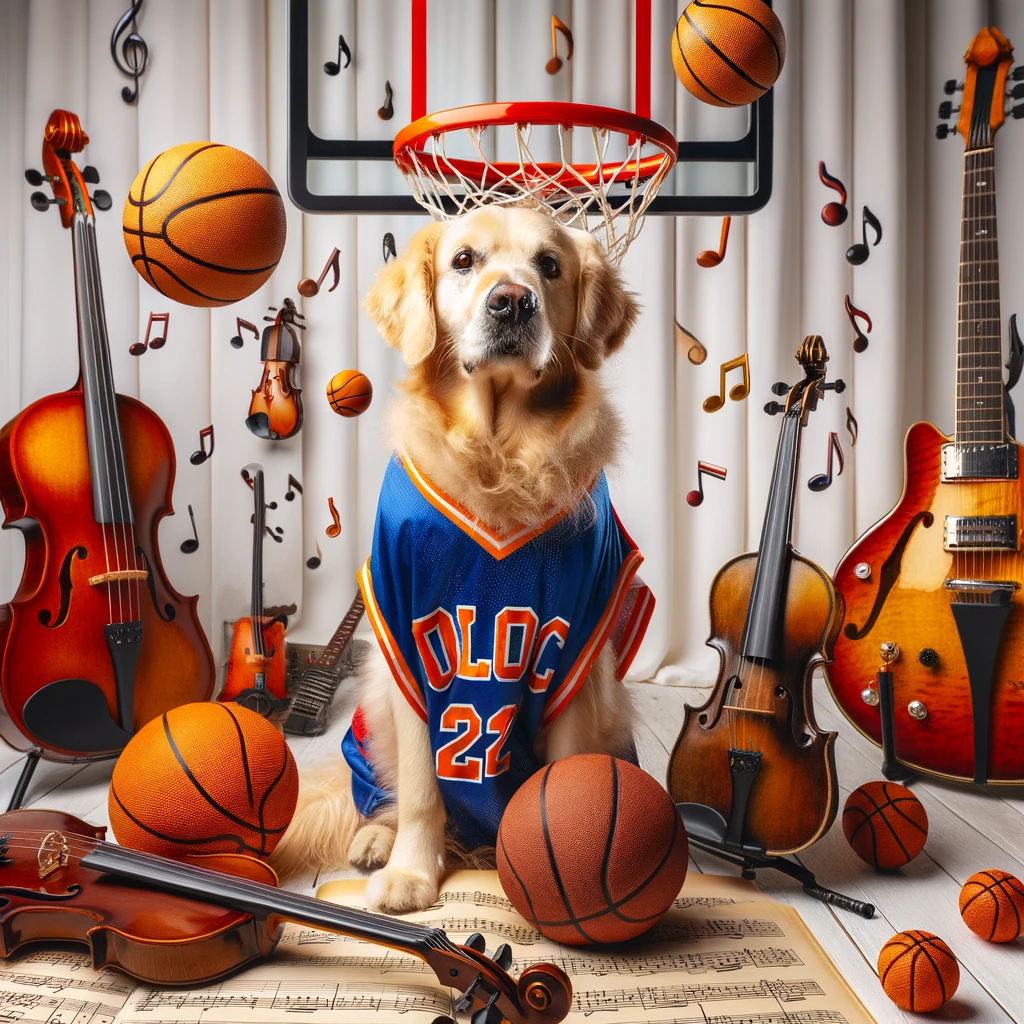
Have you ever thought about how music, sports, and dog training could relate to each other?
Surprisingly, there are more connections than you might think.
As a self-confessed band geek and experienced dog trainer, I’ve noticed some interesting parallels between the worlds of music, sports, and dog training.
Consider musicians, for instance. They often practice pieces repeatedly until they have them down pat. But what happens when they’ve been practicing a piece incorrectly without realizing it? They end up building muscle memory for the wrong notes, and even after they learn the correct ones, they still revert to the incorrect method.
It’s a similar story with sports. Take a child learning to shoot hoops, for instance. Initially, they might use both hands and turn their elbows out due to lack of strength. As they grow older and join a team, the coach works hard to correct the ingrained habit. But despite all the practice, it’s still challenging to overwrite that muscle memory and shoot the ball correctly.
The same principle applies to dog training. Dogs don’t instinctively understand human language. They often guess your commands, trying to decipher what you want. If you don’t correct improper behavior and allow your dog to repeatedly practice the wrong things like pulling on the leash, barking at other dogs, ignoring your calls, or jumping on guests, these behaviors become deeply ingrained.
Surprisingly, this pattern of incorrect practice isn’t limited to dogs. We, as dog owners, can also get stuck in practicing things the wrong way. Overflowing with well-meaning advice from various sources, we might try different methods that don’t yield results. We continue with them, hoping they’ll eventually work, only to end up hiring a trainer out of frustration.
The challenge for the trainer then is to identify and correct these ingrained patterns. If we practice the trainer’s instructions in their presence but revert to old habits when they’re gone, we’re reinforcing the old patterns.
To truly overwrite these habits, we need to remain conscious of our actions and avoid going on autopilot until the new behavior becomes our default. This might involve requesting videos from the trainer, recording ourselves working with the dog, or asking the trainer to review these videos and provide feedback.
The key takeaway here is that learning new skills takes time and patience, both for us and our dogs. If you’re unsure about how to improve your dog’s behavior, remember that you’re not alone. Take a step back, assess your dog’s behavior, and consider the steps you could take to help them be successful. By doing so, you can strengthen your bond with your dog and enjoy a more harmonious relationship.
Just like a catchy tune that you can’t help but sing along to, our dogs pick up habits that become their go-to behaviors. Consider how we often misinterpret song lyrics, confidently singing along only to discover we’ve been belting out the wrong words all along! Despite knowing the correct lyrics, we can’t help but revert to the incorrect ones because that’s what we’ve become accustomed to.
Our dogs behave similarly. When they repeatedly practice an incorrect behavior – whether it’s pulling on the leash, barking at other dogs, or jumping on guests – it becomes a part of their ‘lyrics.’ And it’s our job as their trainers to help them ‘learn the correct lyrics’ and create a harmonious tune in their behaviors.
Remember, with a little patience and practice, you can help your dog hit the right notes every time. So next time you catch yourself singing the wrong lyrics, think about how it relates to your dog’s training. It might just change the tune of your training sessions for the better.
Drop a comment below and tell me what your thoughts are on how this will help you with your dog!

